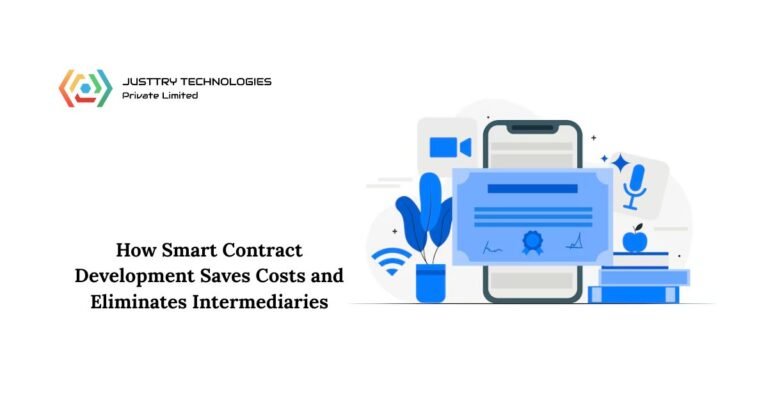The Binance Smart Chain (BSC) has emerged as one of the leading platforms for blockchain developers looking to launch decentralized applications (dApps) and tokens. BEP-20, BSC’s standard token protocol, offers compatibility with Ethereum’s ERC-20 standard while benefiting from BSC’s high throughput and lower transaction fees. However, launching a BEP-20 token that performs optimally requires more than following the standard—it demands careful attention to scalability, transaction speed, and cost efficiency. Optimizing these parameters ensures that the token can handle growing user demand, execute transactions quickly, and maintain a low-cost structure, which is essential for long-term adoption and sustainability.
Understanding BEP-20 Tokens
BEP-20 is a token standard on Binance Smart Chain that defines a set of rules for token implementation. It specifies how tokens can be transferred, approved, and tracked, providing developers with a framework for creating fungible tokens for various applications, including payments, governance, and staking. While BEP-20 tokens development inherit the security and decentralization of BSC, developers must still optimize their token design and deployment strategy to ensure performance under high load conditions.
Key Considerations for Optimizing BEP-20 Tokens
-
Smart Contract Efficiency
The performance of a BEP-20 token largely depends on the underlying smart contract. Developers should focus on writing clean, modular, and gas-efficient code. Optimizing functions, avoiding unnecessary loops, and leveraging Solidity best practices reduces computational overhead and transaction costs. Using well-audited libraries, such as OpenZeppelin, ensures security while minimizing code bloat. Beyond basic optimization, developers can implement caching mechanisms for frequently accessed variables and events, reducing on-chain computation. -
Gas Fee Management
Although BSC offers lower gas fees compared to Ethereum, inefficient smart contracts can still result in unnecessary costs for both developers and users. Developers can implement techniques such as batch transfers, off-chain computations, and minimalistic storage patterns to reduce gas consumption. Additionally, scheduling high-volume transactions during periods of lower network activity can further decrease costs. Optimizing storage layout and minimizing the use of dynamic arrays are practical strategies that significantly reduce per-transaction gas fees. -
Scalability Through Layer-2 Solutions
As token usage grows, scalability becomes crucial. Layer-2 solutions, sidechains, or state channels can help offload transactions from the main BSC network, reducing congestion and improving throughput. Developers can also consider integrating their BEP-20 token with cross-chain bridges to distribute transaction load across multiple networks. This approach ensures that token transfers remain fast even during high-demand periods and provides flexibility for expanding to other blockchain ecosystems. -
Transaction Speed Optimization
Transaction speed on BSC is generally high due to its consensus mechanism, but token design can further enhance performance. Minimizing complex on-chain calculations, leveraging event logging for off-chain processing, and optimizing contract interactions ensure faster transaction execution. Efficient use of smart contract functions such astransferandtransferFromreduces transaction confirmation time. Implementing asynchronous processing for certain token functions, like reward distributions or staking calculations, can also enhance speed without compromising security. -
Tokenomics Design for Network Efficiency
Optimized tokenomics can enhance scalability and cost efficiency. For example, designing a token with deflationary or staking mechanisms can control circulating supply and reduce unnecessary transaction load. Implementing batching strategies for reward distributions or staking payouts can lower network congestion and associated fees. Developers should also consider integrating automated market-making features with efficient liquidity management to reduce slippage and trading costs for users. -
Security and Auditing
Scalability and speed optimizations must never compromise security. Conducting comprehensive smart contract audits identifies vulnerabilities that could be exploited to manipulate token balances or drain funds. Security-conscious design prevents costly rollbacks or network disruptions, which indirectly enhances overall efficiency. Regular post-deployment audits and bug bounty programs are recommended to maintain continuous security assurance. -
Interoperability and Cross-Chain Capabilities
For broader adoption, BEP-20 tokens may need to interact with other blockchains or dApps. Implementing cross-chain bridges or compatibility with Ethereum-based protocols ensures liquidity and flexibility while minimizing friction. Efficient bridging mechanisms reduce transaction delays and prevent redundant computations, allowing the token to operate seamlessly in multiple blockchain ecosystems.
Practical Strategies for Developers
-
Use Lightweight Contracts
Avoid deploying monolithic contracts that combine multiple functionalities. Modular contracts allow for independent upgrades, easier maintenance, and faster execution, reducing on-chain computation and gas costs. -
Batch Transactions Where Possible
Grouping multiple transactions into a single on-chain call reduces gas fees and network load. This is particularly useful for token airdrops, staking rewards, or frequent micro-transactions. -
Implement Off-Chain Computation
Complex calculations can be performed off-chain and only the results submitted to the blockchain. This approach reduces computational overhead on BSC, ensuring faster transaction times and lower fees. -
Use Efficient Data Structures
Choosing the right data structures, such as mappings instead of arrays for frequent lookups, improves execution efficiency. Reducing storage requirements directly lowers gas consumption and improves transaction throughput. -
Regular Performance Testing
Before deployment, developers should simulate high-load scenarios to test scalability and transaction speed. Identifying bottlenecks early allows for optimization, ensuring the token performs efficiently under real-world conditions. -
Monitor and Upgrade
Post-launch, continuous monitoring of token performance, transaction times, and network congestion helps developers identify areas for improvement. Upgrading smart contracts through proxy patterns or Layer-2 integration ensures the token remains efficient as user demand grows.
Case Studies of Optimized BEP-20 Tokens
Several projects on BSC have successfully optimized their BEP-20 tokens for performance:
-
PancakeSwap (CAKE): Through gas-efficient smart contracts and staking mechanisms, CAKE achieves high transaction throughput while maintaining low fees.
-
BakerySwap (BAKE): Uses batch processing and Layer-2 integrations to handle high transaction volumes without network congestion.
-
SafePal (SFP): Implements off-chain computations and modular smart contracts to optimize transaction execution and minimize gas costs.
-
Venus (XVS): Utilizes optimized reward distribution contracts that batch yield payouts, reducing network load while maintaining fast settlement.
These examples demonstrate that careful attention to smart contract design, tokenomics, and network integration can significantly enhance scalability, speed, and cost efficiency.
The Future of BEP-20 Token Optimization
As BSC and the broader blockchain ecosystem continue to evolve, developers will have access to more advanced tools, Layer-2 scaling solutions, and interoperability frameworks. Innovations such as zero-knowledge proofs, sharding, and cross-chain liquidity protocols will further improve token performance and efficiency. Developers who adopt forward-looking optimization strategies will position their projects for long-term success, delivering superior user experiences and maintaining competitive advantages in the rapidly growing DeFi and blockchain landscape.
Conclusion
Optimizing a BEP-20 token for scalability, speed, and cost efficiency is a multifaceted endeavor that requires careful consideration of smart contract design, gas management, tokenomics, and interoperability. By employing best practices such as modular coding, off-chain computations, batch transactions, and Layer-2 integrations, developers can create tokens that perform reliably under high demand, maintain low operational costs, and provide seamless experiences for users. As the blockchain ecosystem grows, these optimizations will be critical to ensuring long-term adoption, network stability, and competitive advantage for BEP-20 projects on Binance Smart Chain.





